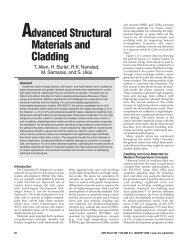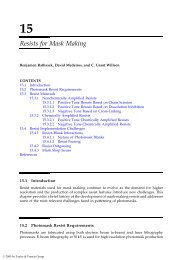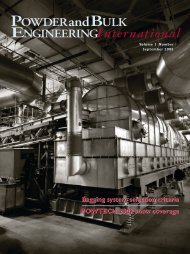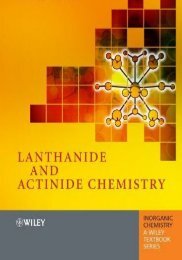Modeling of Biogas Reactors
Modeling of Biogas Reactors
Modeling of Biogas Reactors
Create successful ePaper yourself
Turn your PDF publications into a flip-book with our unique Google optimized e-Paper software.
182 6 <strong>Modeling</strong> <strong>of</strong> <strong>Biogas</strong> <strong>Reactors</strong><br />
called a “riser” and the downflowing part is called a “downcomer”. The circulation<br />
velocity is strongly linked to the amount <strong>of</strong> gas passing through the open cross-sectional<br />
area (3). Hence, by controlling the gas outlets (2) and (6) it is possible to control<br />
the liquid circulation velocity and the mixing time in a module. If no gas is withdrawn,<br />
both the circulation velocity and the mixing intensity are high. In contrast, if<br />
all collected gas is withdrawn, the circulation slows and good settling conditions for<br />
biomass set in. In the lower zones <strong>of</strong> the reactor it might be advantageous to support<br />
the mixing characteristics, in the higher zones good settling conditions should be established.<br />
As in mixing within one module, the mixing between two neighboring<br />
modules depends, as experiments show, on the gas flow rate through the open<br />
cross-sectional area ( 3) between the two modules. If gas rises through this area, turbulence<br />
is generated, causing a convective transport between the two modules. If the<br />
gas flow rate through the connecting area (3) is low, the mass transport between the<br />
modules decreases.<br />
6.4.1<br />
Mixing <strong>of</strong> the Liquid Phase<br />
Reinhold et al. (1996) provided a theoretical and analytical analysis <strong>of</strong> the mixing behavior<br />
<strong>of</strong> a BTR. Experiments were performed on a laboratory (Fig. 6.19) and a pilot<br />
Fig. 6.19 Laboratory reactor representing<br />
a model <strong>of</strong> two modules <strong>of</strong> the BTR. It was<br />
filled with 0.1% ethanol in tap water, and<br />
air was injected through a sparger at the<br />
bottom to simulate biogas production<br />
(height: 6.5 m; diameter 0.4 m; volume 0.7<br />
m 3 ; height <strong>of</strong> a module 3.5 m; length <strong>of</strong> the<br />
baffle 2.89 m).






